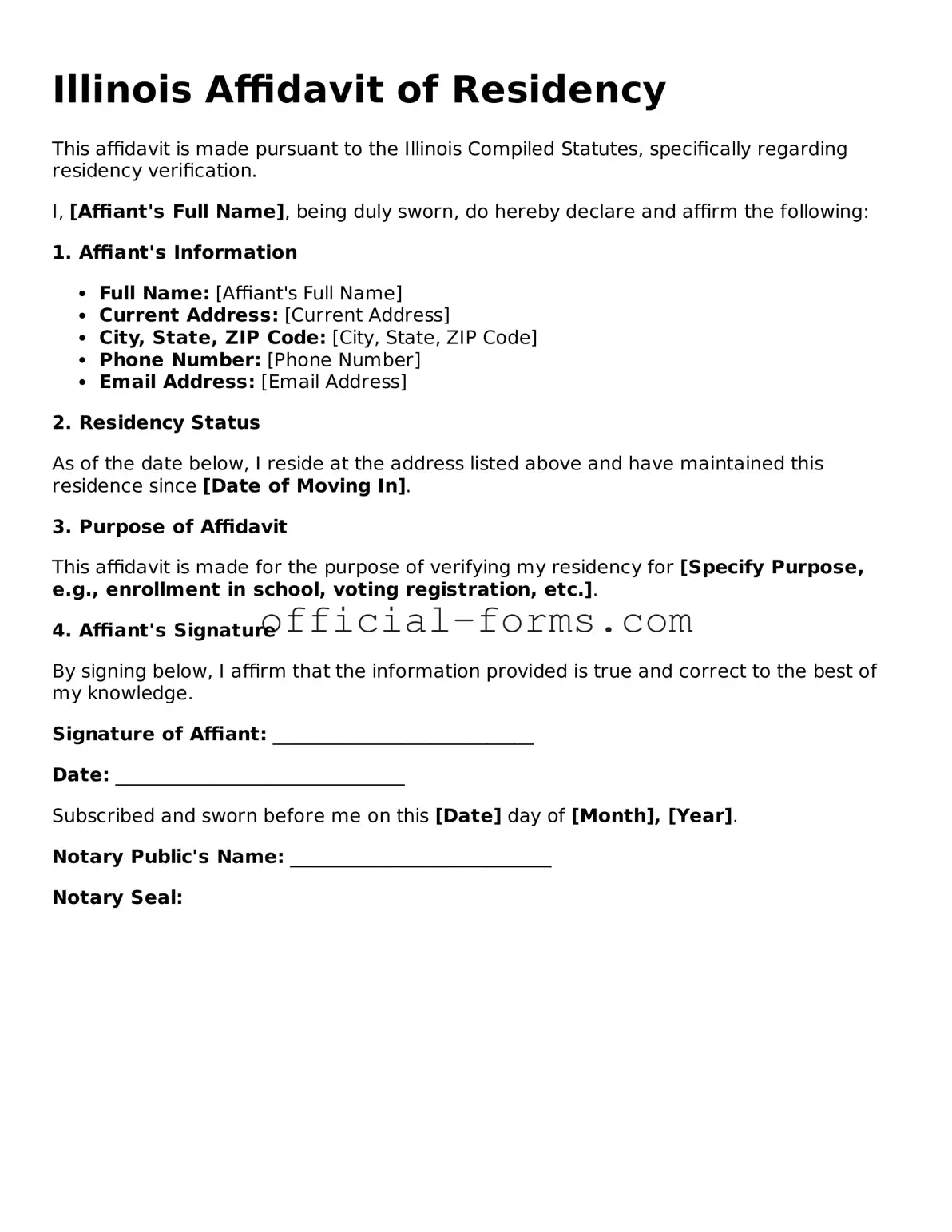Filling out the Illinois Affidavit of Residency form can be a straightforward process, but many people make mistakes that can lead to delays or complications. Understanding these common errors can help ensure that your application is processed smoothly.
One frequent mistake is providing incorrect personal information. It is essential to double-check your name, address, and other identifying details. Even a small typo can create confusion and may result in your affidavit being rejected.
Another common error involves the omission of required signatures. The affidavit must be signed by both the affiant and a witness, if applicable. Failing to include these signatures can render the document invalid, causing unnecessary delays.
Some individuals neglect to provide supporting documentation. The affidavit often requires proof of residency, such as utility bills or lease agreements. Without these documents, the affidavit may not meet the necessary requirements for verification.
Additionally, people sometimes fail to use the most current version of the form. Forms can be updated, and using an outdated version may lead to complications. Always ensure that you have the latest version from the official Illinois government website.
Another mistake is misunderstanding the purpose of the affidavit. Some individuals may think it serves as a substitute for other legal documents, but it specifically attests to residency. Misusing the form can lead to legal issues down the line.
Finally, individuals often overlook the importance of clarity in their statements. The affidavit should be clear and concise, avoiding vague language. Ambiguity can lead to misunderstandings or questions about your residency status, which can complicate the process further.
By being aware of these common mistakes, individuals can fill out the Illinois Affidavit of Residency form more accurately and efficiently, ensuring a smoother experience in establishing their residency.
